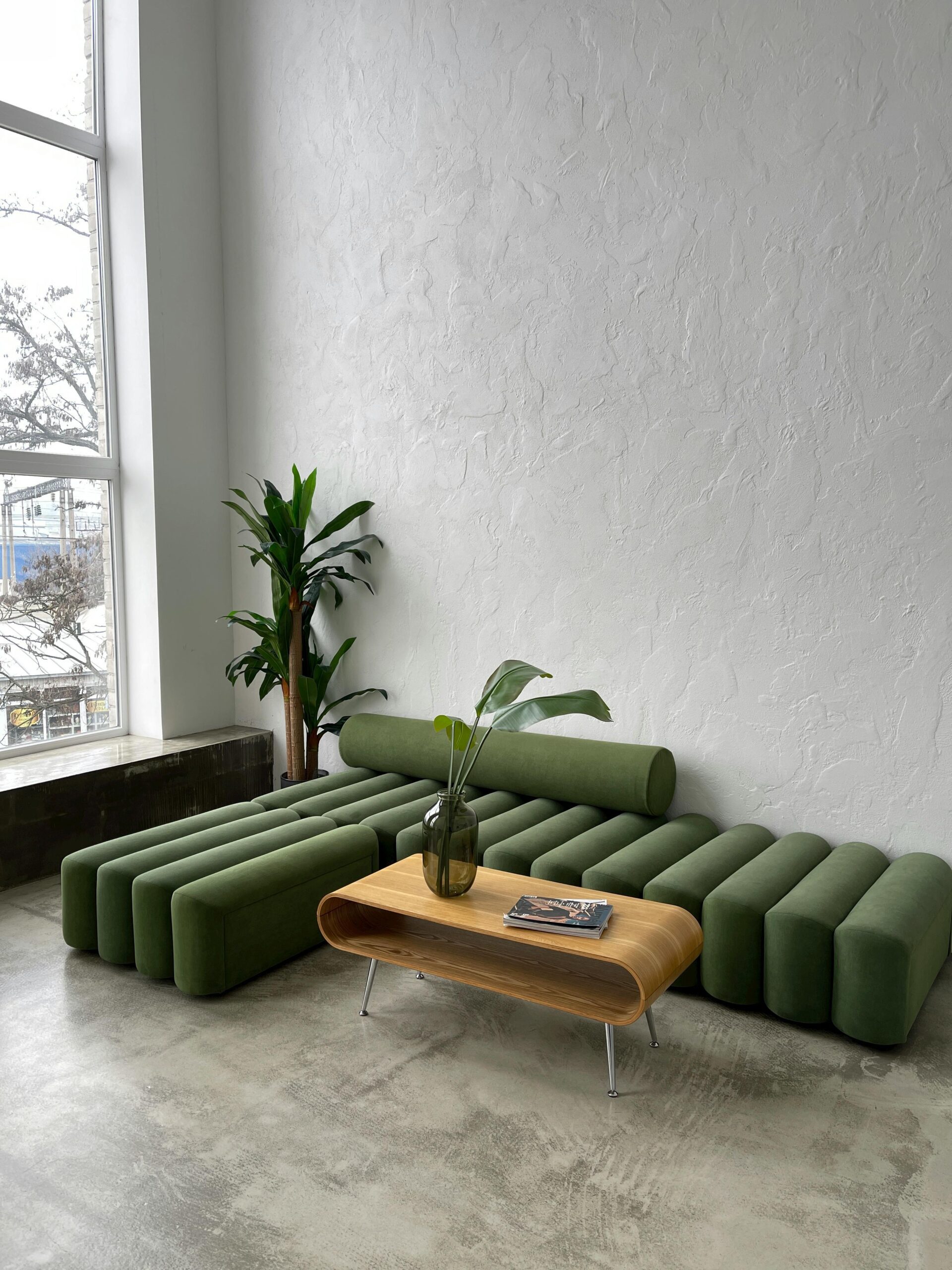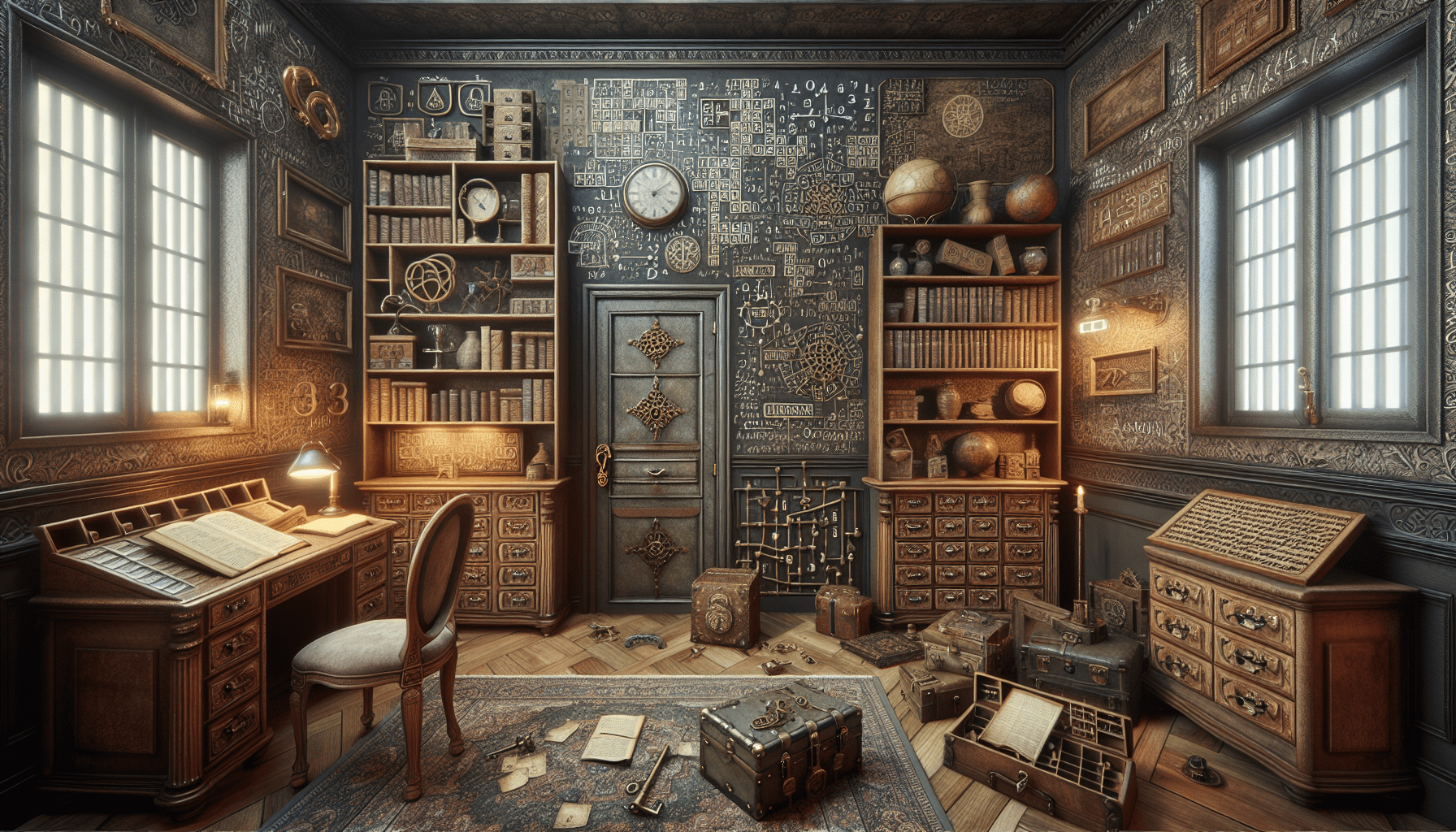Imagine starting your own escape room business, where you create immersive puzzles and thrilling scenarios for people to solve. Before you embark on this exciting venture, one of the crucial aspects to consider is the amount of space you’ll need. In order to provide an unforgettable experience for your customers, you’ll need to ensure your escape room has enough room for them to move around comfortably, while still maintaining an element of challenge. Let’s explore how much space you’ll need for an escape room business, ensuring that every participant is fully immersed in the adventure.
Determining the Space Requirements
When starting an escape room business, determining the space requirements is an essential step in the planning process. The amount of space you will need depends on several factors, including the number of rooms, the size of each room, and the inclusion of common areas. By considering these aspects, you can accurately calculate the total space needed to create engaging and immersive escape room experiences.
Consider the Number of Rooms
One of the first considerations when determining the space requirements for an escape room business is the number of rooms you plan to have. Each room provides a unique puzzle and storyline for players to explore and solve. The number of rooms you have will depend on the size of your facility and the resources available to you. It is essential to strike a balance between having enough rooms to accommodate a decent flow of customers while ensuring each room is well-designed and of high quality.
Think About the Size of Each Room
In addition to the number of rooms, you must also think about the size of each room. The size of the room will dictate the number of players that can participate in the escape room experience at once and will also influence the types of puzzles and challenges that can be incorporated. A larger room may allow for more complex puzzles and immersive environments, while smaller rooms can create a more intimate and challenging experience.
Factor in Common Areas
While the focus of an escape room business is, of course, the escape rooms themselves, it is essential to consider the inclusion of common areas. These areas are where players can gather before and after their escape room experience, and they provide an opportunity for social interaction and debriefing. Common areas can also be utilized for hosting parties or events. Including well-designed and comfortable common spaces can greatly enhance the overall experience for customers and create a welcoming atmosphere within your facility.
Calculating the Total Space
Once you have considered the number of rooms, the size of each room, and the inclusion of common areas, you can proceed to calculate the total space needed for your escape room business. This involves determining the square footage for each room and then adding in the square footage of the common areas and any additional features you plan to include.
Calculate the Square Footage for Each Room
To calculate the square footage for each room, you will need to measure the length and width of the room. Multiply these two numbers together to get the square footage. For example, if a room is 10 feet long and 12 feet wide, the square footage would be 120 square feet. Repeat this process for each room you plan to have in your facility.
Include Common Areas and Additional Features
In addition to the square footage of the individual rooms, you must also consider the square footage of the common areas and any additional features you plan to include. Common areas can include waiting areas, reception spaces, bathrooms, and employee break rooms. It’s important to allocate enough space to comfortably accommodate your customers and staff. Additionally, consider any additional features you may want to incorporate, such as a party room or a retail area for merchandise sales. These features will require additional square footage and should be factored into your overall space calculations.

Considerations for Different Types of Escape Rooms
Escape rooms come in various sizes and formats, each catering to different preferences and player demographics. Understanding the requirements and considerations for different types of escape rooms will help you determine the specific space needs for your business.
Standard Escape Rooms
Standard escape rooms typically accommodate smaller groups of players, usually between 2 to 8 people. These rooms are designed to offer a challenging and immersive experience within a confined space. The size of a standard escape room can vary, but a common range is between 200 to 400 square feet. This size allows for intricate puzzles and detailed theming while still maintaining a sense of intimacy and engagement.
Large Scale Escape Rooms
Large-scale escape rooms, on the other hand, are designed to accommodate larger groups of players, often exceeding 8 participants. These rooms typically span a more extensive area, ranging from 500 to 1000 square feet or more. With more space available, large-scale escape rooms can feature grand set designs, elaborate puzzles, and intricate storylines that can fully immerse a large number of players simultaneously.
Mobile Escape Rooms
Mobile escape rooms have become increasingly popular in recent years. These portable setups allow you to bring the escape room experience to various locations and events. The space requirements for mobile escape rooms will differ depending on the size and complexity of the setup. While they may not require a permanent facility, you still need to ensure there is enough space to set up the room comfortably and provide an enjoyable experience for participants.
Minimum Space Requirements
Understanding the minimum space requirements for an escape room business is crucial for ensuring a safe and enjoyable experience for your customers. These requirements consider both the absolute minimum space needed and constraints based on regulations and safety standards.
Understanding the Absolute Minimum Space
The absolute minimum space required for an escape room largely depends on the number of players the room is designed to accommodate. Generally, you should aim for at least 25 to 30 square feet per player. For example, a room designed for a team of four players should be at least 100 to 120 square feet in size. This minimum space allows players to navigate comfortably and safely without feeling cramped or restricted.
Constraints Based on Regulations and Safety Standards
Aside from the absolute minimum space requirements, you must also account for any regulations and safety standards that apply to your location. Fire safety codes and building regulations may impose specific space requirements, including minimum ceiling height, emergency exits, and accessibility considerations. It is crucial to research and comply with these regulations to ensure the safety of your customers and the legality of your business operation.

Optimal Space Requirements
While understanding the minimum space requirements is essential, striving for optimal space requirements can significantly enhance the overall customer experience. Creating a comfortable and immersive environment relies on providing sufficient space for players to explore, solve puzzles, and interact with the room.
Allowing Sufficient Space for Players
Allocating a generous amount of space for players is crucial for facilitating movement and collaboration within the escape room. Players should be able to move freely, investigate objects, and solve puzzles without feeling crowded or constrained. Providing ample space encourages engagement with the room’s elements and promotes a sense of immersion in the storyline.
Creating a Comfortable and Immersive Environment
Optimal space requirements also consider the overall design and theming of the escape room. Providing enough space for impressive set designs, intricate props, and detailed theming enhances the immersive experience for players. A well-designed escape room creates a captivating atmosphere that transports players into another world, making their escape room adventure more memorable and enjoyable.
Factors Affecting Space Requirements
Several factors can influence the space requirements for an escape room business. Understanding these factors will help you make informed decisions about the size and layout of your facility.
Number of Players
The number of players a room is designed to accommodate will directly impact the necessary space. Larger groups will require more square footage to ensure everyone can participate comfortably, whereas smaller groups may allow for a more compact setup.
Puzzle Complexity
The complexity of the puzzles and challenges within an escape room will also affect the space requirements. Elaborate puzzles may require more physical components, which could necessitate additional space. It is essential to strike a balance between providing challenging puzzles and ensuring there is enough room for players to interact and solve them.
Theming and Storyline
The theming and storyline of an escape room can significantly impact the space requirements. Highly detailed and elaborate themes may require more space to bring the story to life effectively. Consider the level of immersion and realism you want to achieve within your escape room and assess how much space is necessary to accomplish your desired aesthetic and narrative.

Utilizing Vertical Space
Making the most of the available space not only horizontally but vertically can expand the possibilities for creating engaging and challenging escape rooms.
Using Multi-Level Structures
Incorporating multi-level structures within your escape room design allows you to maximize the use of vertical space. By introducing different levels or platforms, you can create unique challenges and provide players with a fresh perspective on puzzles and clues. Multi-level structures can add excitement and intrigue to the escape room experience, making it more memorable for players.
Implementing Vertical Puzzles and Challenges
Vertical puzzles and challenges are another way to utilize the vertical space in an escape room. These puzzles require players to look up or down, encouraging them to explore the entire space rather than focusing solely on eye-level elements. Vertical challenges add variety to the gameplay and can create unexpected surprises for players as they discover puzzles in unexpected places.
Considering Storage and Administrative Areas
When planning the space requirements for your escape room business, it is important to consider not only the areas dedicated to the escape rooms but also the storage and administrative spaces necessary for running the business smoothly.
Space for Props and Equipment
Escape rooms typically require a variety of props, puzzles, and equipment to create an immersive experience. Allocating space for storing and organizing these items is essential for easy access and efficient room resetting between sessions. Consider investing in sturdy shelving units or storage systems that can accommodate your specific needs.
Office Space for Staff
Aside from the dedicated escape room areas, you will also need office space for your staff to carry out administrative tasks. This space can include desks, computers, and other necessary office equipment. Providing your staff with a comfortable and organized workspace will help them effectively manage bookings, customer inquiries, and other operational aspects of your business.
Reception and Waiting Area
Creating a welcoming and comfortable reception and waiting area can greatly enhance the overall experience for your customers. This space can include seating, a reception desk, and any necessary amenities such as refreshments or entertainment. It is essential to ensure there is enough space for your customers to relax and socialize before and after their escape room experience, promoting a positive and enjoyable atmosphere within your facility.

Designing for Accessibility
Designing an inclusive and accessible escape room facility ensures that everyone can enjoy the experience, regardless of their abilities. Consider the following factors when determining the space requirements for an accessible escape room business.
Ensuring ADA Compliance
Complying with the Americans with Disabilities Act (ADA) regulations is crucial for creating an accessible escape room facility. This includes ensuring that doorways, hallways, and other passageways are wide enough to accommodate wheelchair users and individuals with mobility aids. Seating areas should also be accessible and provide enough space to accommodate individuals with disabilities comfortably. It is necessary to consult ADA guidelines and regulations to ensure your facility meets all necessary requirements.
Adapting for Different Abilities
In addition to ADA compliance, designing an escape room facility that can cater to a wide range of abilities is essential. Incorporating adjustable difficulty levels, providing alternate solutions, and considering sensory-friendly elements can make your escape rooms accessible and enjoyable for individuals with differing abilities. Allocating enough space for players to navigate comfortably and adapting puzzles to accommodate different skill levels will help create an inclusive and engaging experience for all your customers.
Evaluating Budget Constraints
While considering the space requirements for an escape room business, it is essential to evaluate your budget constraints. Balancing the costs of space rental or purchase with the quality of the experience you aim to provide is crucial for the long-term viability of your business.
Cost of Space Rental or Purchase
The cost of space rental or purchase will vary depending on factors such as location, size, and local demand. It is essential to research and compare prices in your desired area to find a space that fits within your budget without compromising on quality. Keep in mind that a larger space may require a higher investment but can potentially accommodate more customers, leading to increased revenue.
Balancing Space and Experience Quality
While it may be tempting to opt for the smallest and most affordable space available, it is important to consider the impact on the overall experience you want to provide. Striking the right balance between space and experience quality is crucial for attracting and retaining customers. Offering well-designed and comfortably sized escape rooms will enhance the enjoyment and satisfaction of your customers and contribute to the success and reputation of your business.
In conclusion, determining the space requirements for an escape room business involves considering the number and size of rooms, including common areas, and accommodating various types of escape rooms. Factors such as minimum and optimal space requirements, regulations, factors affecting space requirements, vertical space utilization, storage and administrative areas, accessibility considerations, and budget constraints should be carefully evaluated.
By thoroughly assessing these aspects and ensuring a balance between space availability and experience quality, you can create an escape room facility that provides engaging, immersive, and memorable experiences for your customers. Remember, the space you provide plays a fundamental role in shaping the overall experience, so make sure to design a facility that accommodates the needs and preferences of your target audience.
